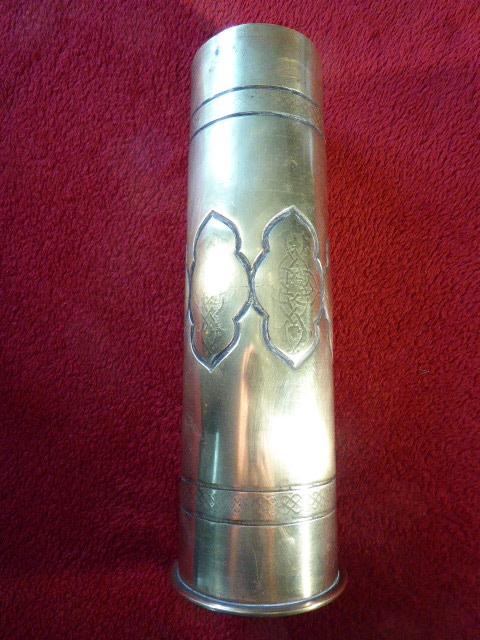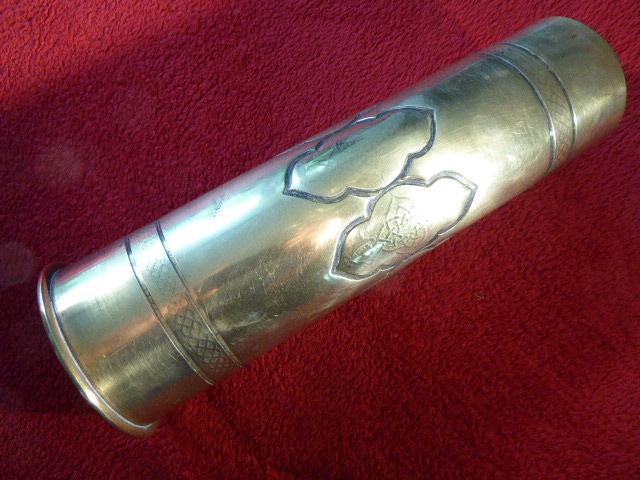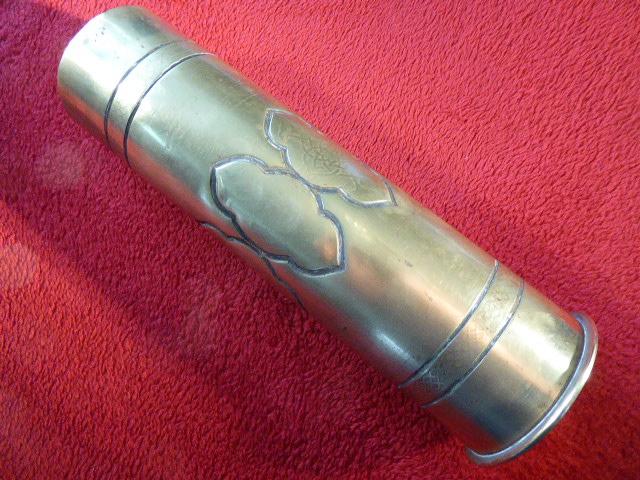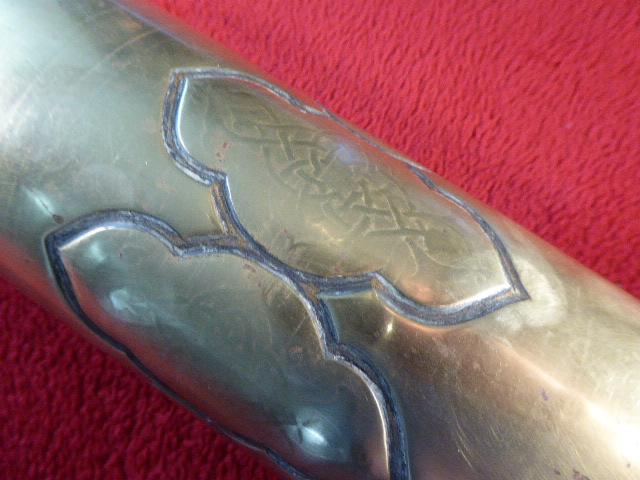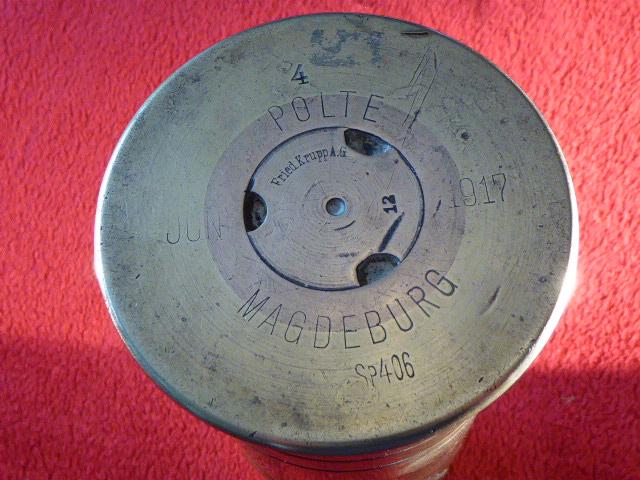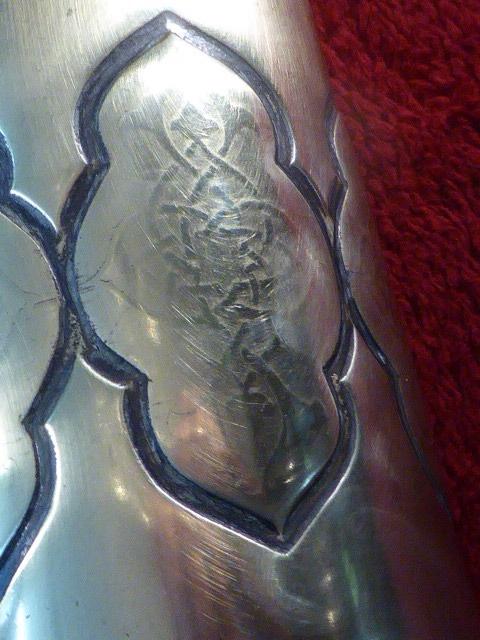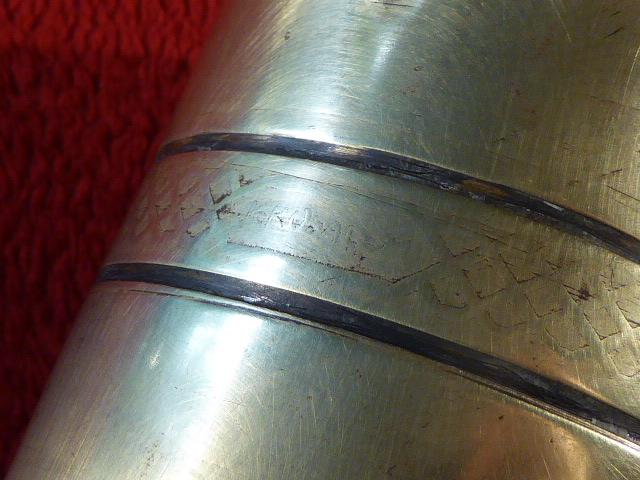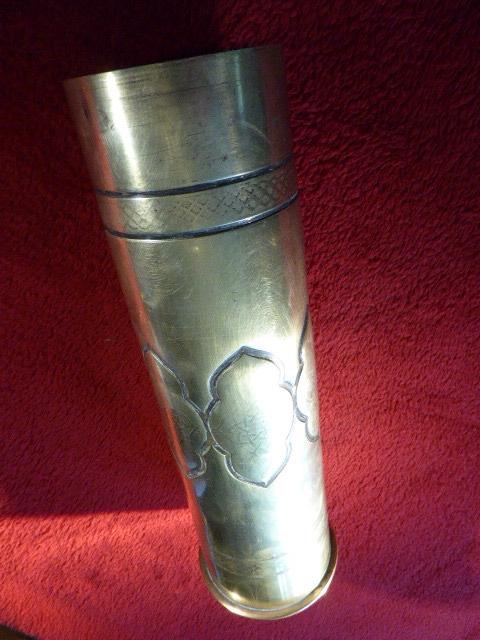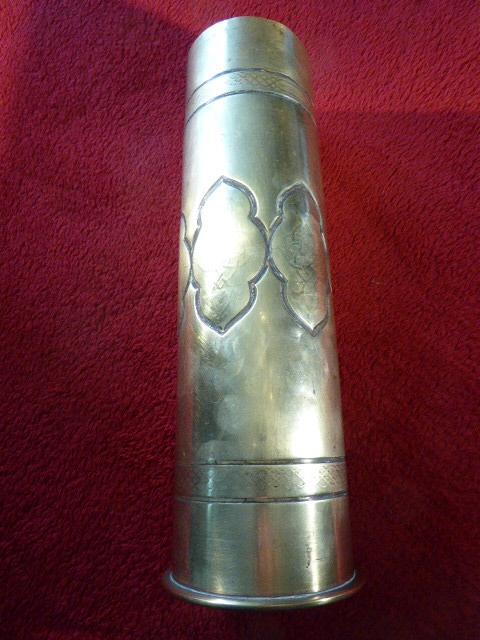Rare WW1 Trench Art German 7.7cm Brass Cartridge Case – Commemorating the Liberation of - Jerusalem - December - 9th 1917
Here on offer is a rare and unusual piece of WW1 trench art.
It is a captured German 7.7cm cartridge case that has been ornately engraved to commemorate the liberation of Jerusalem after 400 years of Turkish rule and occupation.
History about the liberation of Jerusalem.
On the morning of December 9, 1917, after Turkish troops move out of the region after only a single day s fighting, officials of the Holy City of Jerusalem offer the keys to the city to encroaching British troops.
The British, led by General Edmund Allenby, who had arrived from the Western Front the previous June to take over the command in Egypt, entered the Holy City two days later under strict instructions from London on how not to appear disrespectful to the city, its people, or its traditions. Allenby entered Jerusalem on foot, in deliberate contrast to Kaiser Wilhelm’s more flamboyant entrance on horseback in 1898.
No allied flags were flown over the city, while Muslim troops from India were dispatched to guard the religious landmark the Dome of the Rock.
In a proclamation declaring martial law that was read aloud to the city's people in English, French, Arabic, Hebrew, Russian and Greek, Allenby assured them that the occupying power would not inflict further harm on Jerusalem, its inhabitants, or its holy places.
“Since your city is regarded with affection by the adherents of three of the great religions of mankind and its soil has been consecrated by the prayers and pilgrimages of multitudes of devout people, I make it known to you that every sacred building, monument, holy spot, shrine, traditional site, endowment, pious bequest, or customary place of prayer will be maintained and protected according to the existing customs and beliefs of those to whose faith they are sacred.”
Church bells in Rome and London rang to celebrate the peaceful British arrival in Jerusalem. Allenby's success, after so much discouragement on the Western Front, elated and inspired Allied supporters everywhere.
Now on the brass case itself, the patterns on the outside of the case have been worn down over the years by cleaning and now appear very faint. You can make them out but need to angle against the light to see the complex geometric designs, which are really impressive.
It has six equally spaced Islamic window designs, set around the centre, then an upper and lower geometric patterned band, encompassing the case.
The upper band has three cartouche sections that have the following details that can just be made out, albeit impossible to photograph:
JERUSALEM
DECEMBER
9TH 1917
The impressed German artillery markings on the bottom of the brass case, indicates this cartridge was used in a standard German field cannon of the day, the 7.7cm Feldkanone 96 neuer Art.
From the marks I can tell it was manufactured in “JUNE 1917”, by “POLTE” Werke in “MAGDEBURG”. The “4” refers to the Lot No.
I think the “SP 406” refers to the inspection mark. And the SP may be an abbreviation for Spandau.
Interestingly the central removable cartridge fuse has the famous makers name of Fried Krupp A G 12 stamped on it.
The case measures 10.9” (27.7cm) tall, by 3.5” (8.9cm) diameter at the base and 3.1” (7.7cm) at the top.
It weighs a heavy 1kg.
This is a rare opportunity to obtain an historic piece of WW1 trench art from the liberation of Jerusalem.
Please see my pictures for the details of the condition, which complement this description.
Please see my TERMS OF BUSINESS regarding Deliver Charges and Insurance regarding additional insurance cover, should you require it, BEFORE the item is dispatched.
The responsibility lies with the customer to check with your Customs restrictions that this item can be imported into your country.
Code: 50581
65.00 GBP

